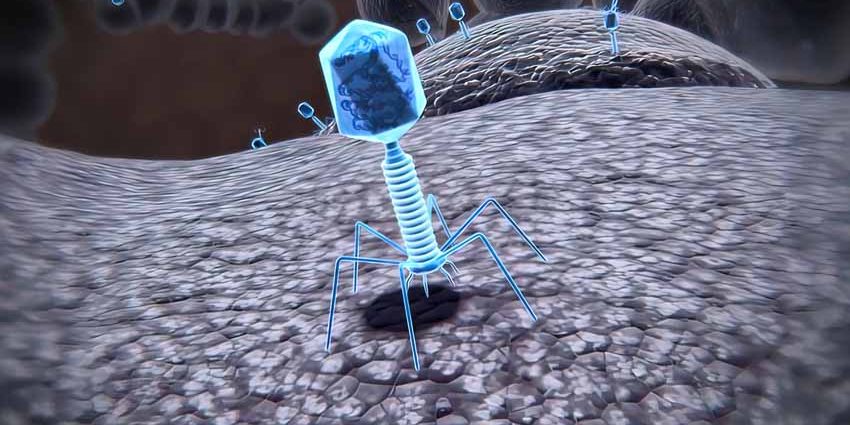The alarming spread of antibiotic resistance and diseases caused by the presence of pathogens in food represent a global threat affecting human health, animal health, agriculture, food safety and the environment. Globalisation and climate change increase the risk of bacterial contamination, and the misuse and overuse of antibiotics, among other factors, leads to the emergence of resistant and multi-resistant superbugs, causing infections that cannot be treated with antibiotics or other currently available antimicrobials.
One of the lines of research being developed in recent years to tackle antibiotic resistance and control the presence of unwanted bacteria in the fields of (human and animal) health and food safety is the use of certain “good” viruses that kill these bacteria: bacteriophages (also called phages).
The main advantage of phage therapy and/or the use of phages is their high specificity. While antibiotics sweep through the entire microbiota, also attacking microorganisms that are beneficial to the body and thus upsetting the delicate balance of the intestinal flora, phages act specifically against the bacteria causing the infection (or contamination), and are also completely harmless to humans, plants, animals and the environment.
Here are some of the keys to understanding phages.
What are bacteriophages? How can they contribute to improving food safety?
This video explains in a simple way how the use of phages can combat the presence of pathogens and other unwanted bacteria, including antibiotic resistant and multi-resistant bacteria, throughout the agri-food chain.
Some examples of bateriophages applied to the food industry
In the field of aquaculture, the Fishealth Network aims to develop new tools and integrated platforms for the prevention, diagnosis and treatment of infectious diseases in aquaculture, in order to strengthen the competitiveness of this sector through a process of R+D+i transfer that will reduce the impact of these pathologies in Spanish aquaculture. One of the lines of work of this network investigates the application of phages as an alternative to antibiotics for the treatment of infectious outbreaks in aquaculture production.
In the field of livestock farming, the application of bacteriophages can also be very useful for controlling infections in animals intended for human consumption. For example, phage therapy is being used to control the prevalence of pathogens such as Salmonella or Campylobacter in pigs and poultry, or Escherichia coli in cattle, pigs and sheep.
Phages can also be applied during food processing both in manufacturing environments, as a disinfection tool, and directly in food products. As an example, the SEAFOOD Tomorrrow project showed the efficacy of the application of Listeria monocytogenes-specific phages to improve food safety.
Therefore, phage therapy and the use of new methods based on the application of phages that are part of the natural microbiota of humans, animals, plants, food and the environment, represent an innovative strategy to combat both the prevalence of pathogens and/or unwanted bacteria, and the development and spread of antimicrobial resistance, in the fields of health (human and animal) and food safety.
Collaboration and networking
Research in the field of bacteriophages is constantly growing and we can already speak of the existence of networks of excellence, such as FAGOMA, in which different research groups belonging to Spanish universities, research centres and technology centres dedicated to the study of bacteriophages have come together with the aim of sharing results and techniques, promoting collaborations and transferring this knowledge beyond the academic environment. The aim is to transmit these advances to society, promoting collaborations with companies, as well as the dissemination of research through dissemination programmes and social networks.
